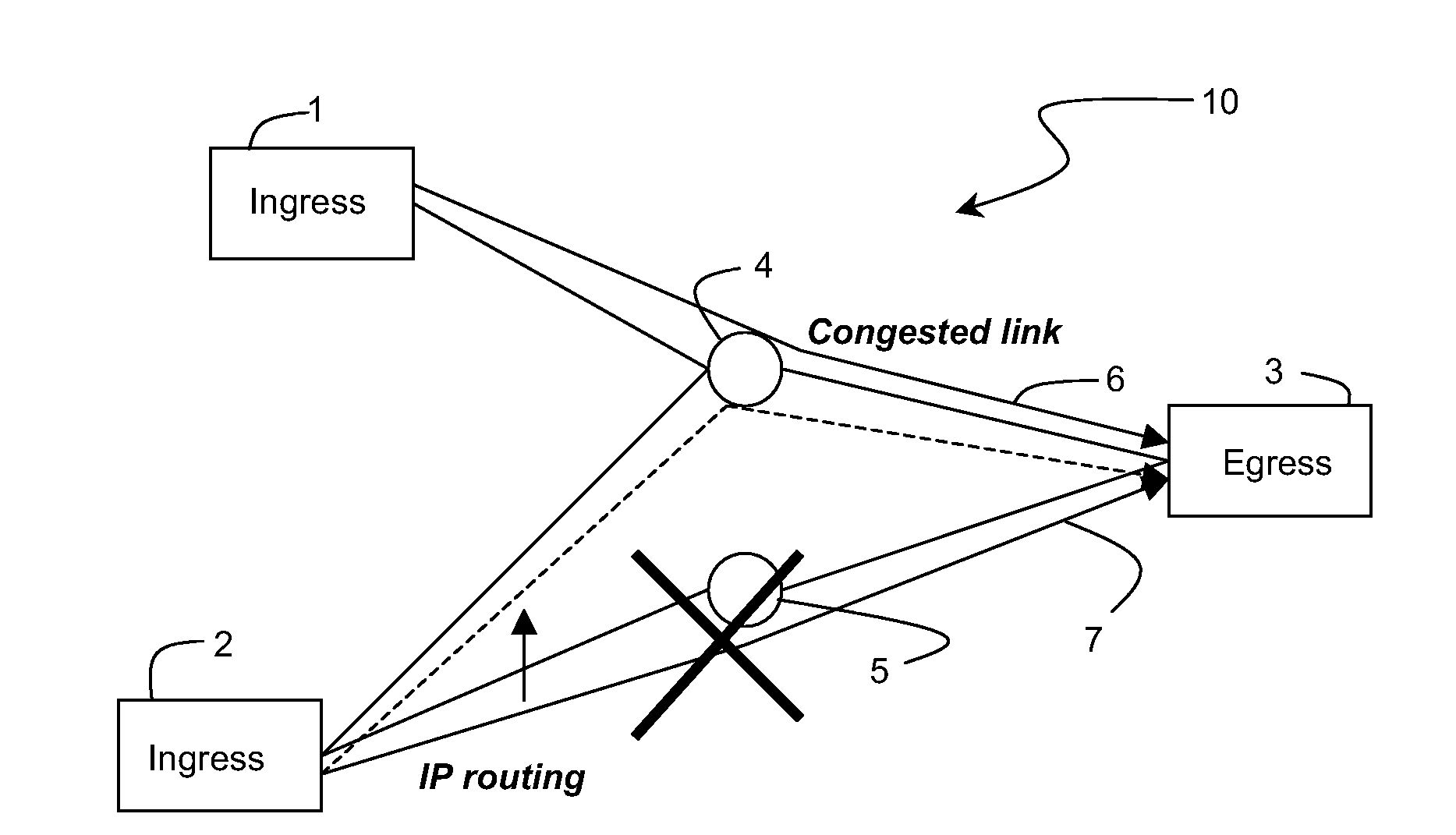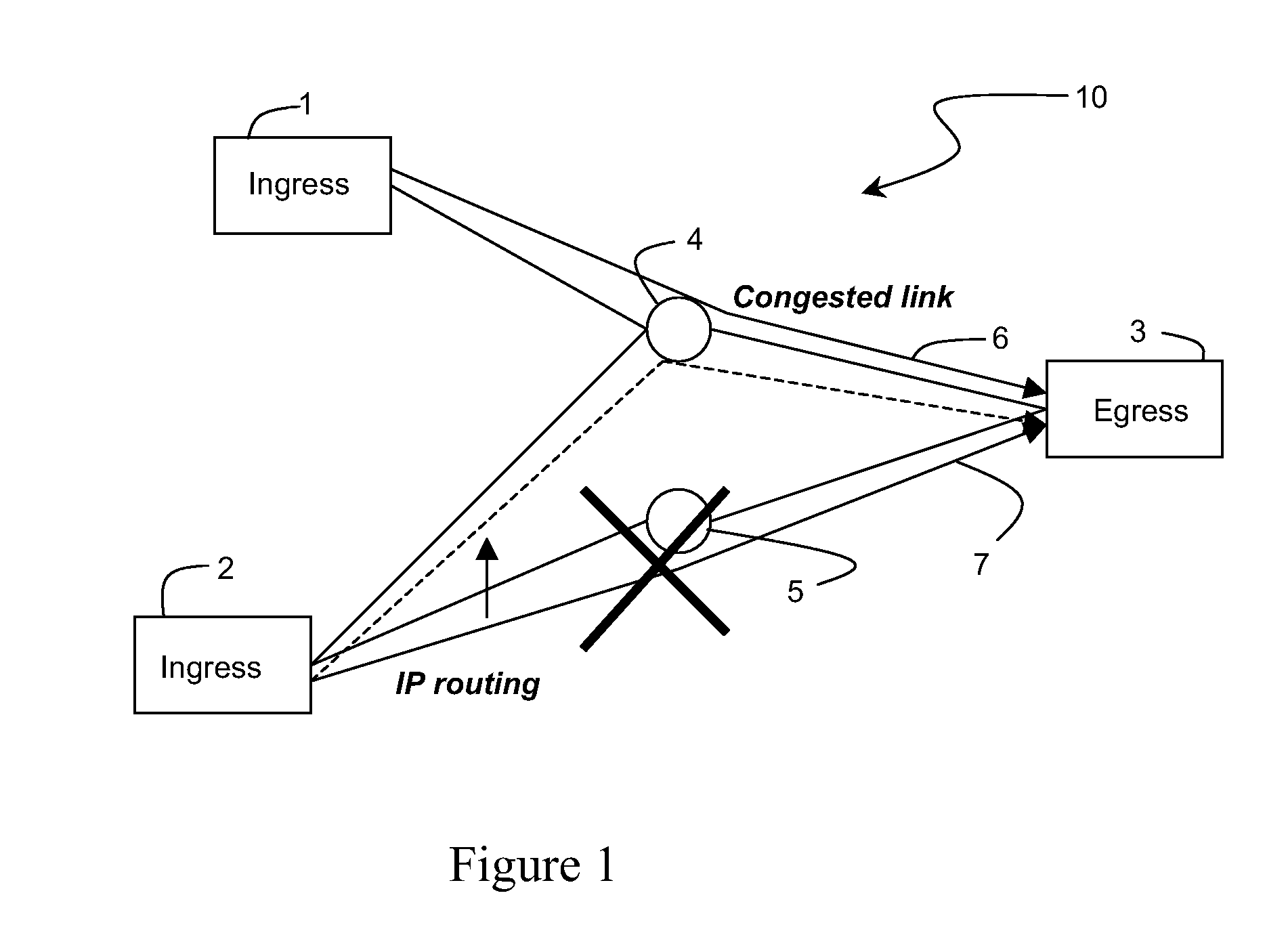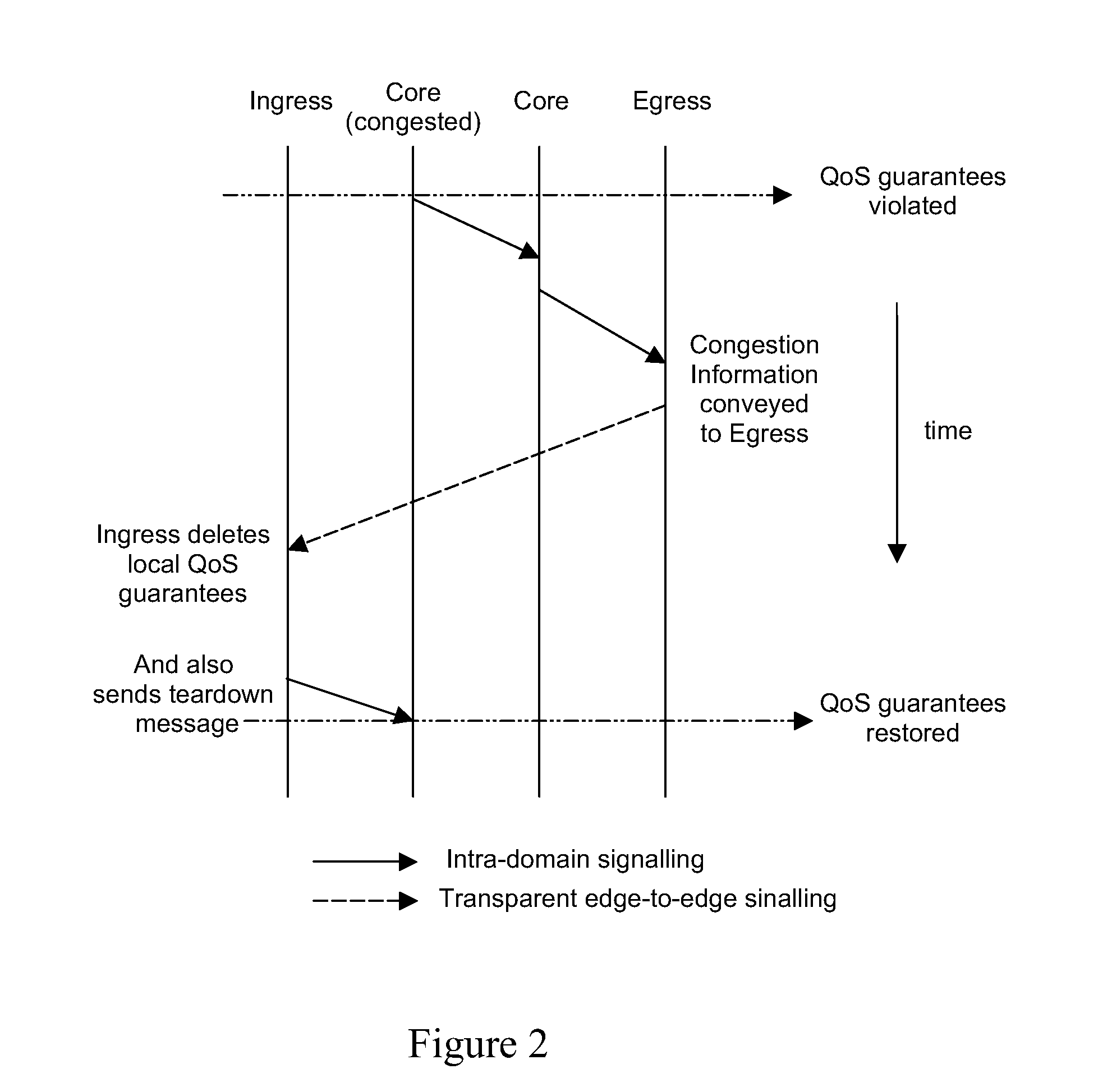Congestion Control in Stateless Domains
a stateless domain and congestion control technology, applied in the field of congestion control in stateless domains, can solve the problems of severe congestion, diffserv architecture does not provide any means for devices outside the domain, storage and maintaining per-flow states, etc., and achieves the effect of simple and fast process and simple and fast egress edge nod
- Summary
- Abstract
- Description
- Claims
- Application Information
AI Technical Summary
Benefits of technology
Problems solved by technology
Method used
Image
Examples
Embodiment Construction
[0101]A typical IP DiffServ domain, such as for example the domain 10 illustrated in FIG. 1, comprises ingress edge and egress edge nodes and interior routers. An admission control algorithm, based on resource reservation, is applied to provide QoS for flows admitted under normal operating conditions, as described in the state of the art. In order to handle extreme conditions, such as a large increase of the call rate, or link or node failure, a severe congestion algorithm is used. The ingress edge and egress edge nodes maintain per flow reservation states. The basic mechanism of the severe congestion algorithm is used to terminate some of the flows in order to maintain QoS for the other flows. An optimization of the severe congestion algorithm is described below.
[0102]In the case of unexpected conditions, the traffic can be higher than the capacity of the routers or links, as previously described with reference to FIG. 1, showing the failure of one of the links fails in a data path...
PUM
 Login to View More
Login to View More Abstract
Description
Claims
Application Information
 Login to View More
Login to View More - R&D
- Intellectual Property
- Life Sciences
- Materials
- Tech Scout
- Unparalleled Data Quality
- Higher Quality Content
- 60% Fewer Hallucinations
Browse by: Latest US Patents, China's latest patents, Technical Efficacy Thesaurus, Application Domain, Technology Topic, Popular Technical Reports.
© 2025 PatSnap. All rights reserved.Legal|Privacy policy|Modern Slavery Act Transparency Statement|Sitemap|About US| Contact US: help@patsnap.com



